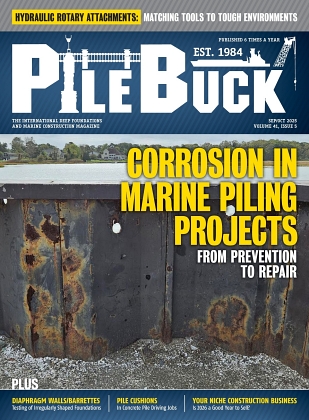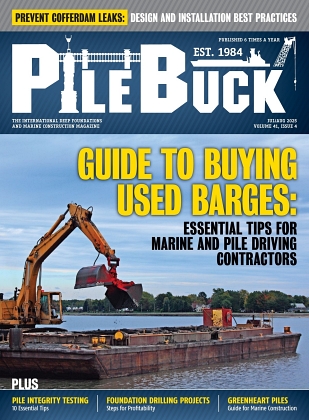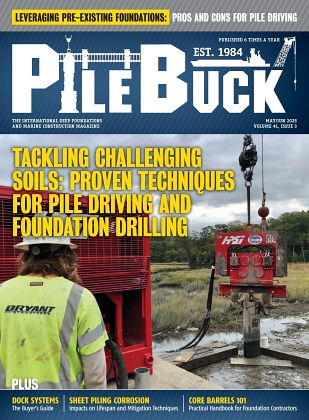Cofferdam Installation and Removal: Cost Management, Inspection, Case Studies, and Other Best Practices
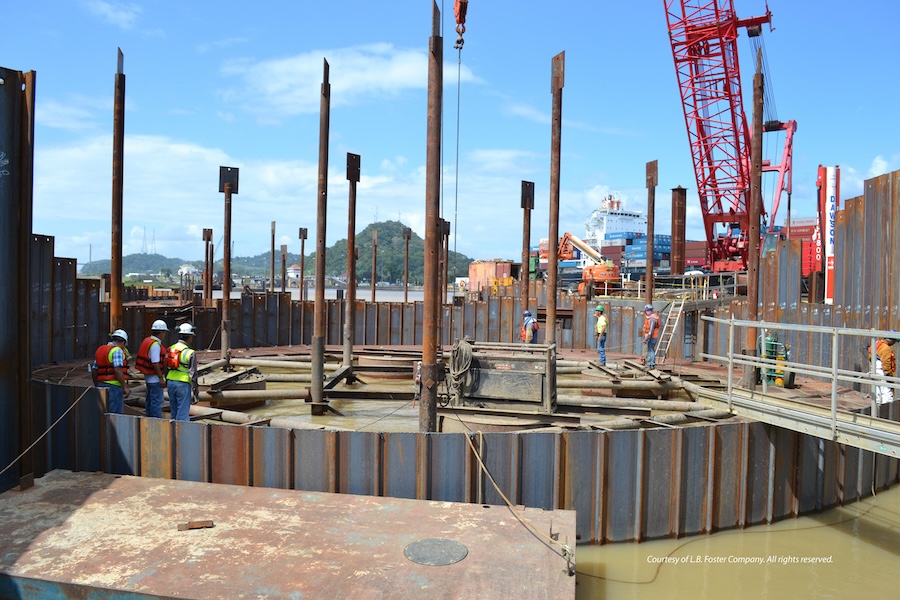
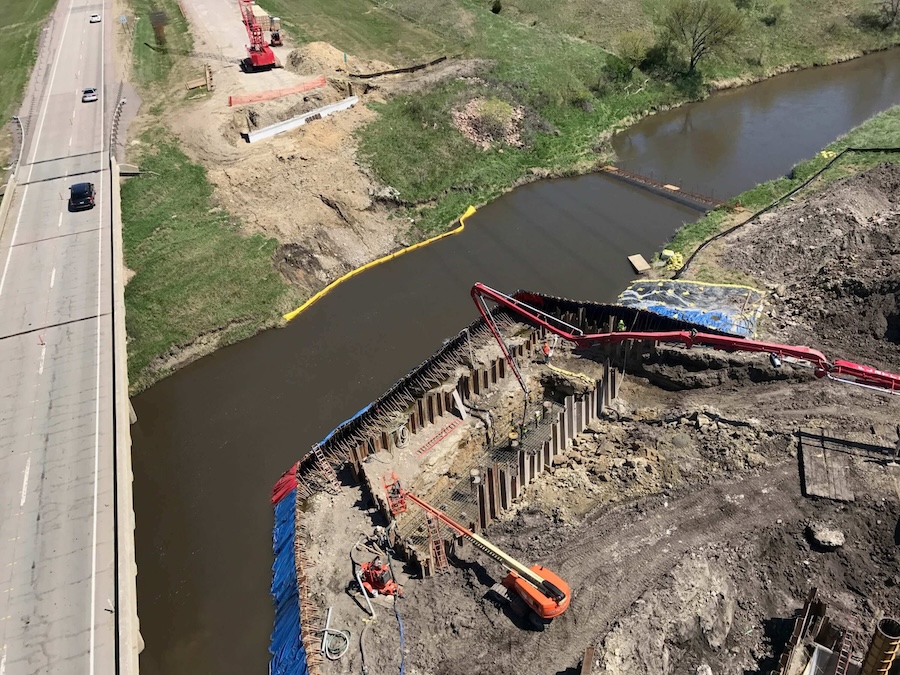
View the complete article here.
Cofferdams are temporary enclosures built within or across bodies of water to create a dry work environment for construction activities. These structures are crucial in projects involving water bodies as they provide a secure and efficient workspace, minimizing risks and enhancing project timelines.
By isolating the work area from water, cofferdams reduce the need for extensive dewatering operations—saving on costs and protecting the environment by containing sediments and pollutants. They are versatile solutions used in various scenarios—including bridge construction, marine infrastructure, hydraulic structures, and pipeline installation.
Temporary cofferdams also play a key role in environmental remediation by isolating contaminated sediments for removal and treatment. Overall—they are essential for safe, efficient, and cost-effective construction in marine environments.
Types of Temporary Cofferdam Systems
Temporary cofferdam systems come in various designs, each suited to specific site conditions and project requirements. Understanding the different types, their construction processes, and their advantages and disadvantages is crucial for selecting the appropriate cofferdam for any given project.
Sheet Pile Cofferdams
Sheet pile cofferdams are constructed using interlocking steel or vinyl sheets driven into the ground to form a continuous wall. Steel is commonly used due to its strength and durability, but vinyl is also an option for less demanding applications. The installation process involves driving the sheets into the ground using vibratory hammers or hydraulic presses, creating a barrier to water. The enclosed area is then dewatered to provide a dry work environment. The primary advantage of sheet pile cofferdams is their strength and ability to form a tight seal. However, they can be expensive and require specialized equipment for installation.
Earth-Filled Cofferdams
Earth-filled cofferdams use materials such as sandbags, rockfill, or earth to create a barrier. Common types include sandbag cofferdams, which are quick to deploy—and rockfill cofferdams, which provide substantial stability. The construction process involves piling materials up to form a dam, with the weight of the fill material providing stability. The area behind the dam is then dewatered. Earth-filled cofferdams are relatively inexpensive and simple to construct. However, they may not provide as watertight a barrier as other types and can be labor-intensive to build.
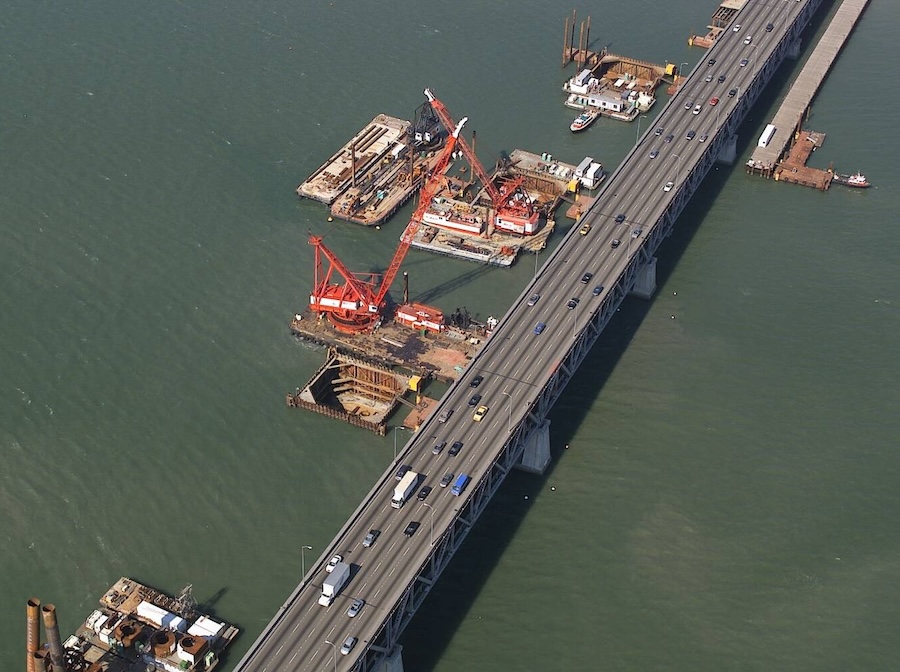
Cellular Cofferdams
Cellular cofferdams are constructed from interlocking steel cells filled with earth or rock. The design involves large steel cells that are interconnected to form a continuous wall, which is then filled with earth or rock for stability. They are typically used for large-scale projects, such as bridge piers and dam construction—where significant stability is required. Cellular cofferdams provide excellent stability and are suitable for deep water applications. However, they require significant material and labor to construct.
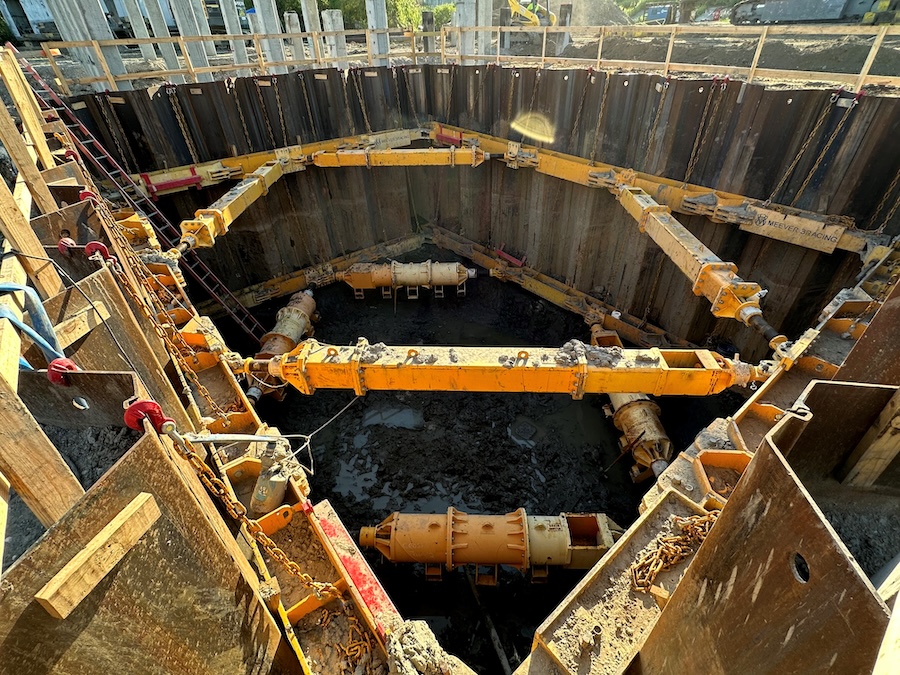
Braced Cofferdams
Braced cofferdams consist of vertical walls supported by internal braces to withstand water pressure. The design includes vertical sheets or piles with horizontal braces or struts to support the structure. Installation techniques involve driving the walls into the ground and bracing them internally, followed by dewatering the enclosed area. Braced cofferdams are effective for deep excavations but can be complex and costly to construct due to the need for extensive bracing.
Double-Walled Cofferdams
Double-walled cofferdams feature two parallel walls filled with earth or rock for stability. The construction method involves building two parallel walls and filling the space between them with earth or rock. The enclosed area is then dewatered. These cofferdams are often used in situations where a robust and stable structure is required, such as in deep water or where high water pressure is present. Double-walled cofferdams provide excellent stability and strength but can be expensive and time-consuming to build due to the need for large quantities of fill material and the complexity of the design.
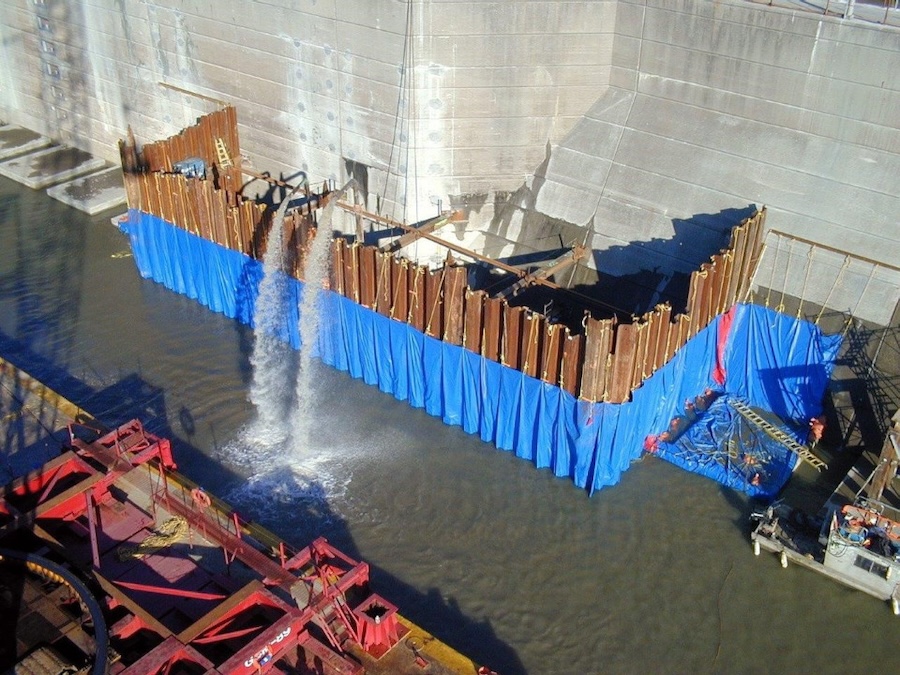
Design Considerations
Proper design considerations are essential for the successful implementation of cofferdam systems. Key factors to address include site assessment, hydrological and geological factors, load calculations, and environmental impact.
Site Assessment
Proper site assessment is critical in the design of cofferdam systems. This involves a thorough evaluation of the site conditions—including soil type, water depth, flow velocity, and existing structures. Understanding these factors helps in selecting the most appropriate type of cofferdam and ensuring its stability and effectiveness during the construction process.
Hydrological and Geological Factors
Hydrological and geological factors play a significant role in the design of cofferdams. Hydrological considerations include water level fluctuations, current strength, and potential for flooding. Geological factors involve the soil composition, bearing capacity, and potential for erosion or seepage. Accurate assessment of these factors is essential to design a cofferdam that can withstand the forces exerted by the surrounding water and soil.
Load Calculations
Load calculations are crucial to ensure the structural integrity of the cofferdam. These calculations determine the forces that the cofferdam must resist—including hydrostatic pressure, soil pressure, and any additional loads from construction equipment or materials. Engineers must consider both the maximum and minimum expected loads to design a cofferdam that is safe and stable under all conditions.
Environmental Impact
The environmental impact of cofferdam construction must be carefully considered and mitigated. Cofferdams can affect water quality, aquatic habitats, and sediment transport. Measures should be taken to minimize these impacts—such as using silt curtains, designing for minimal disturbance, and implementing best management practices for erosion and sediment control. Environmental assessments and permits are often required before construction can begin.
Construction and Installation
The construction and installation of cofferdams require meticulous planning and execution to ensure safety, efficiency, and stability. Key steps include site preparation, selecting appropriate equipment and machinery, following a step-by-step installation process, and addressing common challenges with effective solutions.
Site Preparation
Site preparation is the first and crucial step in the construction and installation of cofferdams. It involves clearing the site of any debris or obstacles, leveling the ground, and setting up access routes for equipment and personnel. Proper site preparation ensures a safe and efficient construction process, reducing the risk of delays and accidents.
Equipment and Machinery
The selection of appropriate equipment and machinery is vital for the successful installation of cofferdams. Commonly used equipment includes vibratory hammers, hydraulic presses, excavators, and dewatering pumps. The choice of machinery depends on the type of cofferdam, the site conditions, and the scale of the project. Ensuring that all equipment is well-maintained and operated by trained personnel is essential for safety and efficiency.
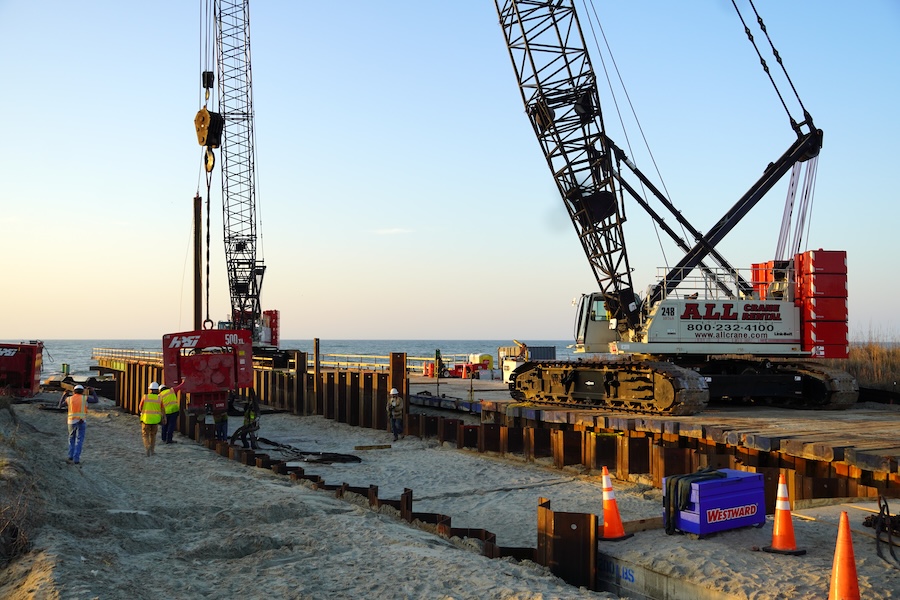
Step-by-Step Installation Process
The installation process for cofferdams typically follows a series of methodical steps:
- Driving piles or sheets: Depending on the type of cofferdam, steel or vinyl sheets or piles are driven into the ground using vibratory hammers or hydraulic presses to create a continuous barrier.
- Bracing and anchoring: For braced cofferdams, internal braces or struts are installed to support the walls against water pressure.
- Dewatering: Once the barrier is in place, water is pumped out from the enclosed area to create a dry work environment. This step requires continuous monitoring to manage water levels.
- Stabilization: The cofferdam structure is inspected and any necessary adjustments are made to ensure stability and safety before commencing construction activities within the dry area.
Common Challenges and Solutions
Several challenges can arise during the construction and installation of cofferdams, including:
- Seepage and leakage: This can be managed by installing additional sealing measures such as grout or synthetic liners.
- Soil instability: Reinforcement techniques such as soil mixing or the use of geotextiles can improve soil stability.
- Equipment malfunctions: Regular maintenance and having backup equipment on site can mitigate delays caused by machinery breakdowns.
- Weather conditions: Planning for adverse weather and incorporating contingency measures can help manage weather-related disruptions.
Quality Control and Inspection
Quality control and inspection are ongoing processes throughout the construction and installation of cofferdams. Regular inspections should be conducted to check for structural integrity, alignment, and stability. Quality control measures include verifying the installation of piles or sheets to the correct depth, ensuring proper sealing, and monitoring the effectiveness of dewatering. Documentation of inspections and maintenance activities is essential for compliance with safety and environmental regulations.
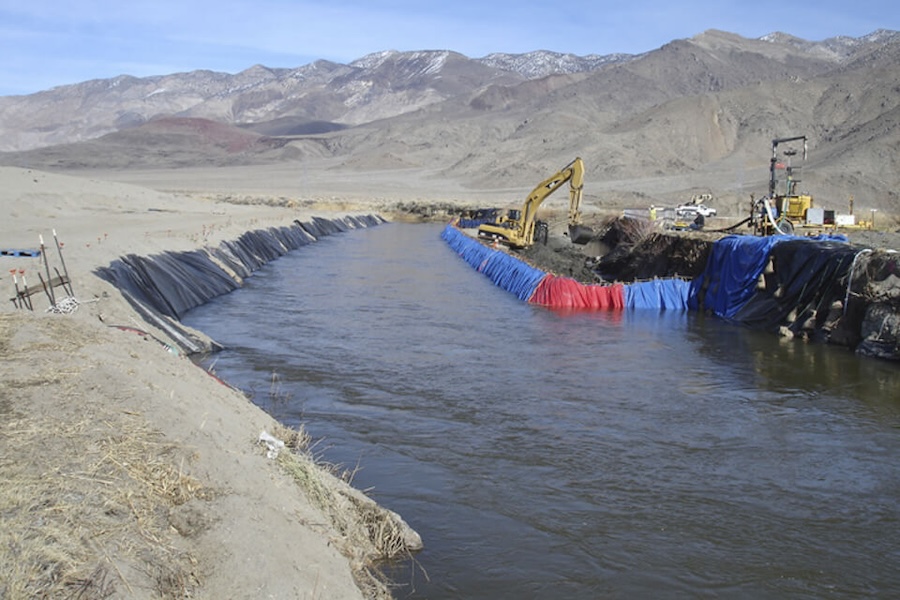
Removal and Demobilization
The removal and demobilization of cofferdams are critical processes that require careful planning and execution to ensure safety and environmental compliance. Key steps include safe removal procedures, environmental considerations, site restoration, and post-removal inspection.
Safe Removal Procedures
The removal of cofferdams requires careful planning and execution to ensure safety. Safe removal procedures involve systematically dismantling the structure in a controlled manner. This typically includes reversing the installation process, such as removing internal bracing and extracting sheet piles or other materials. It is crucial to ensure that all personnel are aware of the removal plan and are equipped with the necessary safety gear. Continuous monitoring and communication are essential to prevent accidents and ensure a smooth removal process.
Environmental Considerations
Environmental considerations play a significant role during the demobilization of cofferdams. The removal process should minimize the disturbance to the surrounding environment and aquatic ecosystems. This includes properly managing any remaining water and sediment within the cofferdam to prevent contamination. Measures should be taken to avoid the release of pollutants and to ensure that the site is left in a condition that meets environmental regulations and standards.
Site Restoration
Site restoration is a critical step following the removal of a cofferdam. This involves returning the site to its pre-construction state or better. Restoration activities may include regrading the land, restoring vegetation, and stabilizing any disturbed soil. Ensuring proper site restoration helps prevent erosion and other long-term environmental impacts. It also ensures that the area is safe and usable for its intended purpose post-construction.
Post-Removal Inspection
Post-removal inspection is essential to verify that the cofferdam removal and site restoration have been completed successfully. Inspectors should assess the site for any remaining hazards, structural debris, or environmental impacts. This inspection ensures that all removal procedures were followed correctly and that the site is safe and compliant with all regulatory requirements. Any issues identified during the inspection should be addressed promptly to ensure the site’s long-term stability and safety.
Expert Tips and Best Practices
Consider the following tips and best practices while working on your next cofferdam project…
Choosing the Right Cofferdam Type
Selecting the appropriate type of cofferdam is crucial for the success of a project. Consider factors such as water depth, soil conditions, project duration, and budget when choosing between sheet pile, earth-filled, braced, cellular, or double-walled cofferdams. Consulting with engineers and reviewing past project case studies can provide valuable insights into the best type of cofferdam for specific conditions and requirements. For projects requiring a versatile and efficient solution, consider Portadam—which offers robust performance and ease of installation in various environments.
Effective Project Planning
Effective project planning is essential to ensure the timely and successful completion of cofferdam construction. Begin with a detailed site assessment and feasibility study—followed by a comprehensive project plan that includes timelines, resource allocation, and risk management strategies. Involving all stakeholders in the planning process and maintaining open lines of communication throughout the project can help identify potential issues early and ensure everyone is aligned with project goals.
Cost Management
Managing costs effectively is vital for staying within budget while maintaining project quality. Develop a detailed budget that includes all potential expenses—such as materials, equipment, labor, and contingencies for unexpected costs. Regularly review the budget against actual expenditures and adjust plans as necessary to avoid cost overruns. Seeking competitive bids from suppliers and contractors can also help manage costs without compromising on quality.
Safety Best Practices
Adhering to safety best practices is paramount in cofferdam construction to protect workers and the environment. Ensure that all personnel are trained in the safe operation of equipment and are aware of the specific hazards associated with cofferdam construction. Implement strict safety protocols—including the use of personal protective equipment (PPE), regular safety briefings, and emergency response plans. Conducting regular safety audits and encouraging a culture of safety can significantly reduce the risk of accidents and injuries on the job site.

Case Studies
Real-world examples of cofferdam use highlight their versatility and effectiveness in various construction scenarios. The following case studies showcase the innovative solutions and techniques employed to overcome challenges and achieve successful project outcomes.
Expansion of the Panama Canal
The expansion of the Panama Canal required extensive use of cellular cofferdams to create stable, dry environments for excavation and concrete work. One of the main challenges faced was managing the high water pressure and ensuring soil stability in a tropical environment with frequent heavy rains. Engineers addressed these challenges by implementing additional sealing techniques, such as grout injections and synthetic liners, to prevent seepage. Continuous monitoring of water levels and structural integrity was crucial, and real-time data allowed the construction team to respond quickly to any issues. These measures ensured the cofferdams remained effective and stable throughout the project, allowing the canal expansion to proceed on schedule.
New Tappan Zee Bridge Construction
The construction of the New Tappan Zee Bridge in New York is a prime example of successful cofferdam use in a large-scale infrastructure project. The project required creating dry work areas for the construction of bridge piers in the Hudson River, which has strong currents and varying water levels. Sheet pile cofferdams were chosen for their strength and ability to form a tight seal. The main challenge was maintaining the cofferdams’ integrity against the river’s currents and potential ice flows during winter. To overcome this, engineers used vibratory hammers for deep pile driving and incorporated additional bracing to reinforce the cofferdams. Regular inspections and maintenance ensured any damage was promptly repaired, allowing the project to progress smoothly.
London Thames Tideway Tunnel Redevelopment
The redevelopment of the London Thames Tideway Tunnel involved constructing large, deep shafts in the Thames River—requiring innovative cofferdam designs. The primary challenge was dealing with high water pressures and tidal fluctuations in a busy urban waterway. Engineers designed double-walled cofferdams with advanced bracing systems to withstand these conditions. The use of real-time monitoring technology was a key technique, allowing for immediate detection and response to any structural issues. Additionally, the project incorporated eco-friendly materials and practices to minimize environmental impact. This innovative approach ensured the cofferdams remained secure and effective, facilitating the successful completion of the tunnel shafts.
View the complete article here.
What is a cofferdam used for in construction projects?
Cofferdams are used to create dry work environments by isolating areas from water, ensuring safety and efficiency in water-based construction projects.
What are the types of cofferdams used in construction?
Common types of cofferdams include sheet pile, earth-filled, cellular, braced, and double-walled, each suited for different water depth and project requirements.

